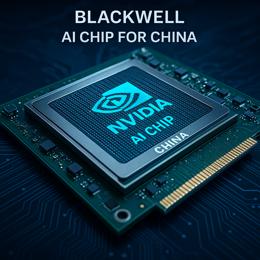Image created by AI
AI Gold Rush: Will History Repeat Itself with Big Tech's $62bn Bet?
As the artificial intelligence (AI) landscape continues to expand, tech giants are plunging an astonishing $62 billion into AI developments, betting on a future where technology not only enhances day-to-day operations but also redefines them. This significant capital expenditure, recorded in the third quarter of 2024 and marking a 50% increase from last year, signifies a strategic pivot from stock buybacks to foundational investments in AI capabilities.
Tech companies like Alphabet, Amazon, Apple, Meta Platforms, and Microsoft are leading this financial charge. This massive outlay is aimed at not just enhancing their AI frameworks but at solidifying a lead in a market that's increasingly central to future economic architectures. Their considerable spending is also a reflection of a robust financial health, with these companies generating $76 billion in free cash flow in the same quarter.
While the infusion of funds into AI from these tech behemoths has invigorated stock markets and inspired a bullish outlook among many investors, this enthusiasm is not universally shared. Critics point out the historical tech bubbles, notably the late '90s dot-com boom, suggesting a possible disconnect between current investment levels and actual economic return from AI technologies.
Moreover, notable voices like Daron Acemoglu and Arvind Narayanan emphasize a pragmatic approach. They argue that despite the impressive advancements in AI, its practical, broad-based application remains limited. Narayanan, in particular, suggests that the integration of AI into core business processes is not merely a function of technological advancement but also requires organizational and structural adaptations, which are inherently time-consuming.
The bullish sentiment on AI is perhaps best encapsulated in the outlook for companies like Nvidia, which has seen a meteoric rise in its market value thanks to its dominance in AI-compatible chips. However, the bearish perspective, as articulated by financial analysts like Jim Covello, points out the substantial costs associated with AI development, and the historical precedence where cheaper technological solutions typically gain more traction and sustainability.
This dichotomy in perspectives presents potential investors with a complex landscape. While the 'pick-and-shovel' trade strategy - investing in companies supplying essential AI infrastructure like Nvidia - has historically been lucrative, the rapid valuation increases bring back memories of past tech bubbles that burst dramatically.
As such, while AI continues to dominate tech investment narratives and holds clear transformative potential, stakeholders are urged to balance enthusiasm with caution. The landscape is evolving, and while the foundational investments by these tech giants are shaping an AI-enhanced future, the actual economic impact, integration, and return on these investments will unfold over the coming decades.










